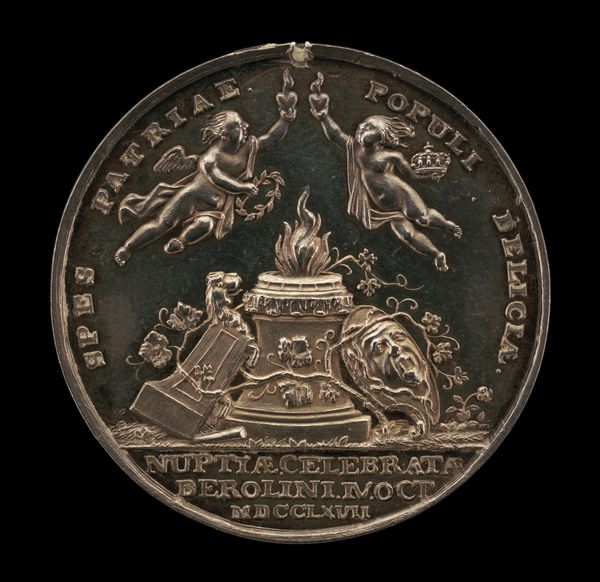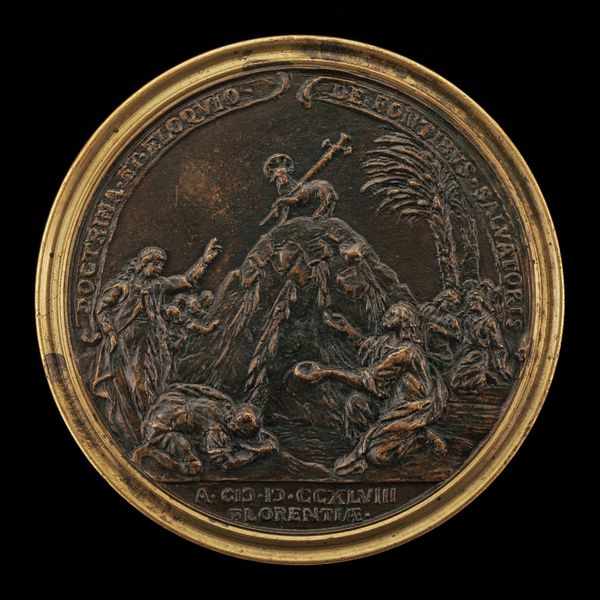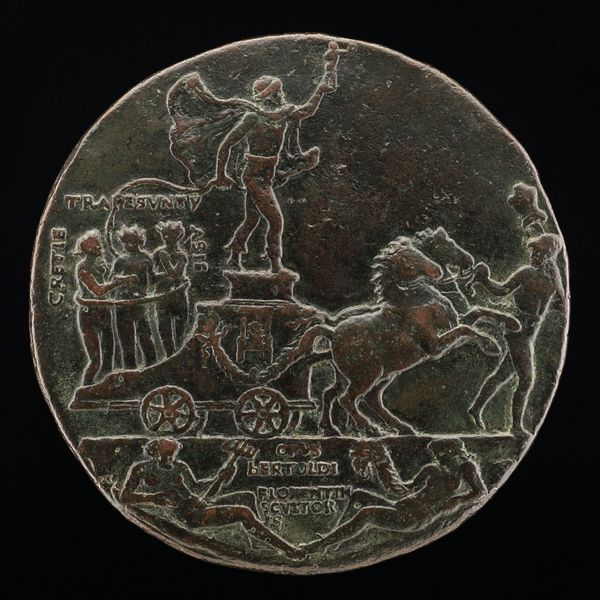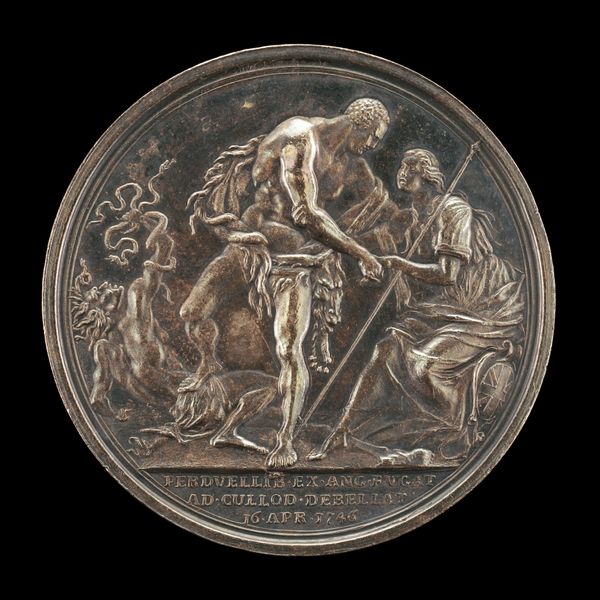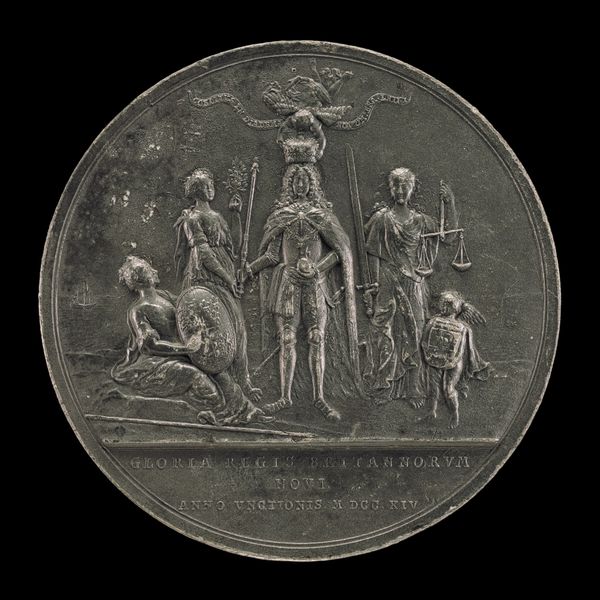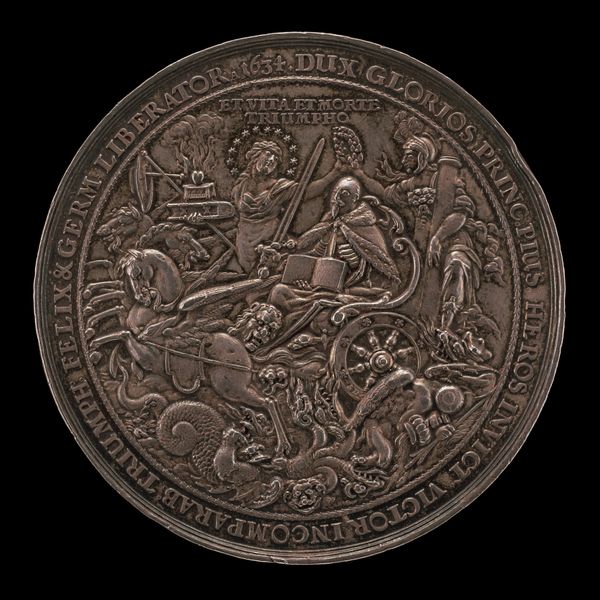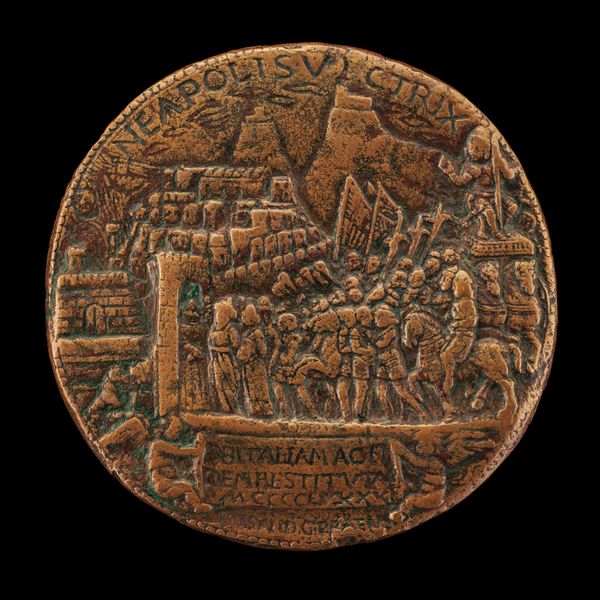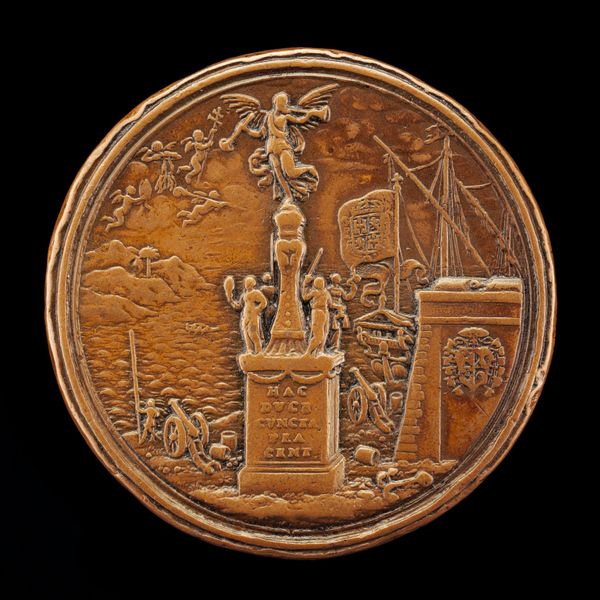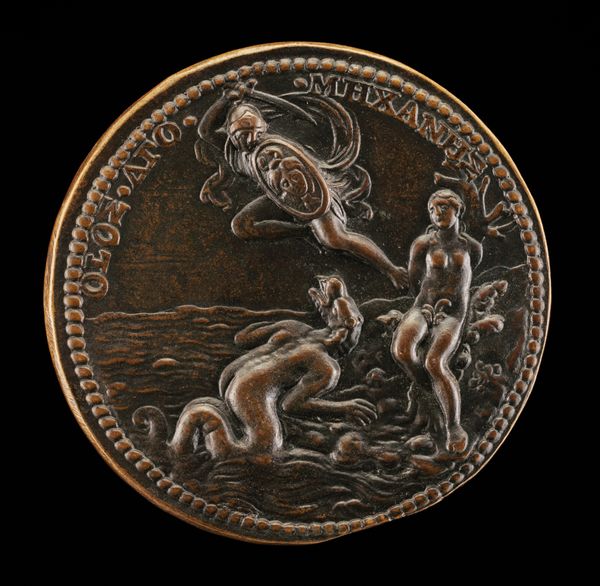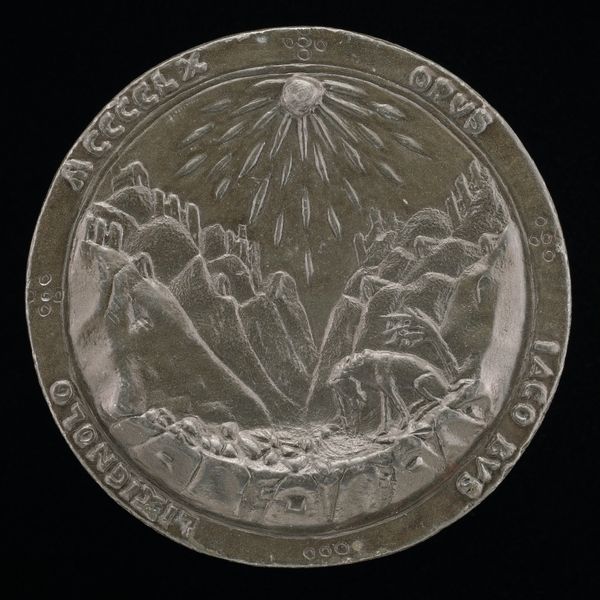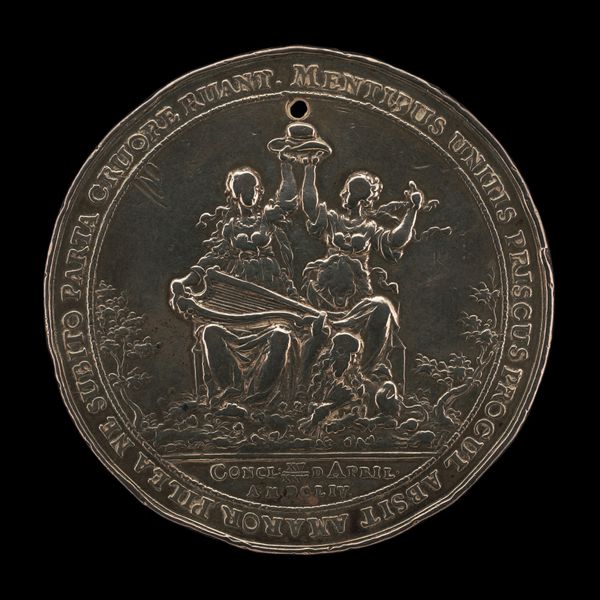![Britannia Recording Merit [obverse] by Anonymous](/_next/image?url=https%3A%2F%2Fd2w8kbdekdi1gv.cloudfront.net%2FeyJidWNrZXQiOiAiYXJ0ZXJhLWltYWdlcy1idWNrZXQiLCAia2V5IjogImFydHdvcmtzLzMxOWVmZmVmLThiZDEtNGQ2NS04NzFhLTc2NzAwNTNjMmJlYi8zMTllZmZlZi04YmQxLTRkNjUtODcxYS03NjcwMDUzYzJiZWJfZnVsbC5qcGciLCAiZWRpdHMiOiB7InJlc2l6ZSI6IHsid2lkdGgiOiAxOTIwLCAiaGVpZ2h0IjogMTkyMCwgImZpdCI6ICJpbnNpZGUifX19&w=3840&q=75)
metal, relief, sculpture, engraving
#
medal
#
neoclacissism
#
allegory
#
metal
#
sculpture
#
relief
#
sculpture
#
history-painting
#
engraving
Dimensions: overall (diameter): 5.32 cm (2 1/8 in.) gross weight: 53.26 gr (0.117 lb.) axis: 12:00
Copyright: National Gallery of Art: CC0 1.0
Curator: This medal, "Britannia Recording Merit," dates back to around 1800 and is by an anonymous artist. It's crafted from metal using engraving and relief techniques. Editor: The relief really makes the figures stand out. The sheer labor involved in producing something so detailed on such a small scale is striking. What speaks to you about this piece? Curator: The material itself, the metal, and the techniques used - engraving and relief - were not neutral choices. Metal signified permanence, value, and status. Consider the means of production. Who was commissioned to make it? What was the role of the engraver, the laborers? The subject of Britannia, of course, references an allegorical figure which in itself brings to mind other imagery. How does this object function within the culture of Neoclassicism? Editor: That makes sense. It's not just about the imagery but also the statement made by choosing this medium and these specific production methods. How does the medal challenge or reinforce social boundaries? Curator: Think about who would have possessed such an object. It's about power, isn’t it? This medal becomes a commodity imbued with social meaning. How does the portrayal of Britannia – with those rays of light seemingly “enlightening” and shining on the "children", a scene next to the buildings, etc. – contribute to legitimizing authority? Consider too, how neoclassical aesthetics shaped, and were shaped by, political and economic ideologies of the time. Editor: It's amazing to think about all the layers of meaning embedded in something so small and seemingly straightforward. I didn't consider the implications of it being metal. It's like understanding the material opens a whole new door. Curator: Exactly! We move past simply aesthetic appreciation and start questioning the power structures inherent in art production and consumption. Materiality allows us to critically engage with history. Editor: I'll definitely look at artworks through a materialist lens from now on. It adds a crucial dimension!
Comments
No comments
Be the first to comment and join the conversation on the ultimate creative platform.
